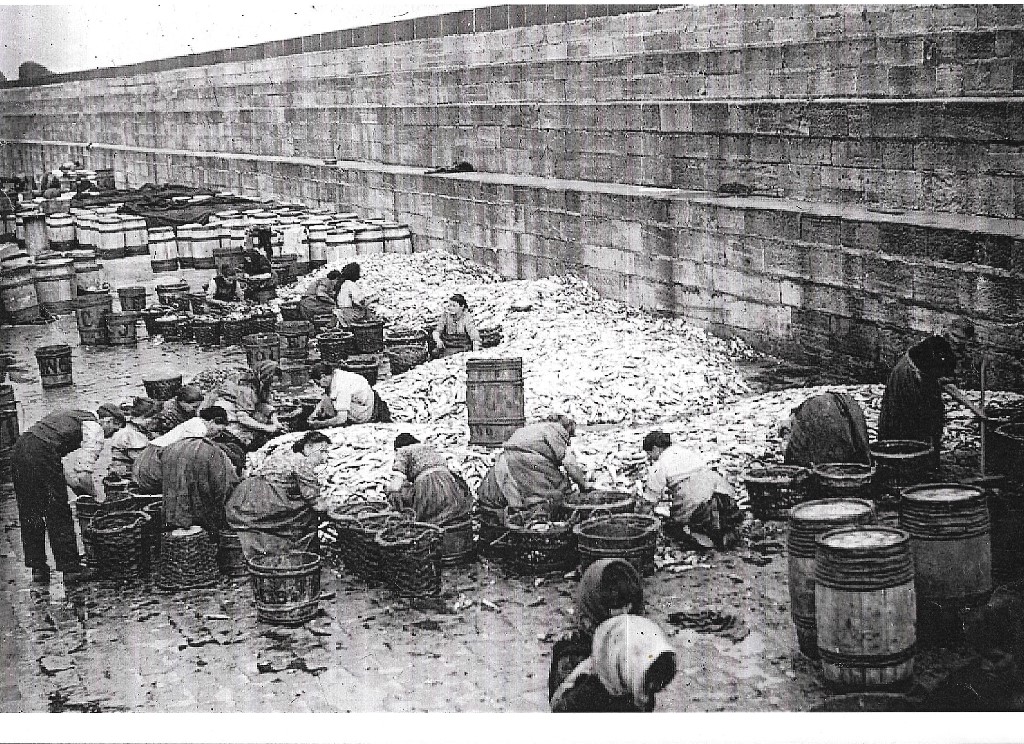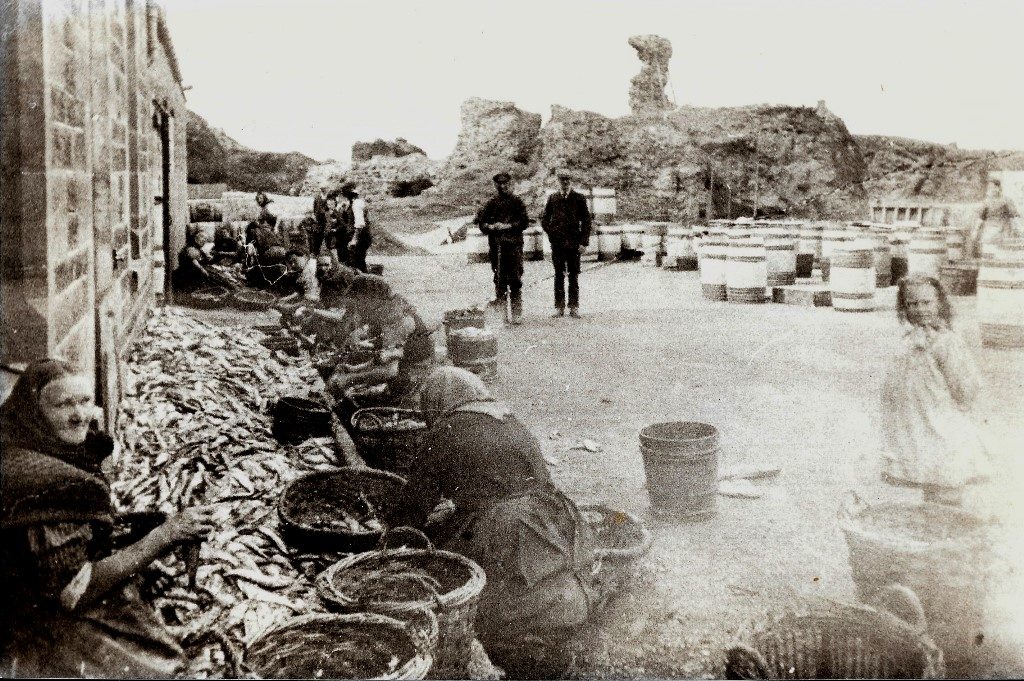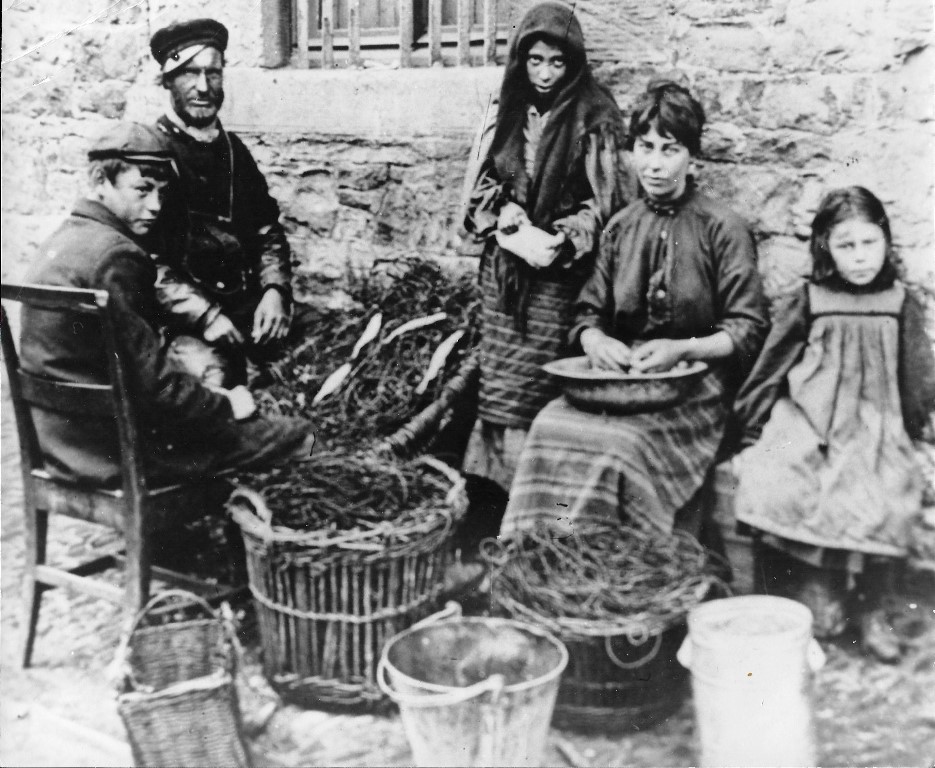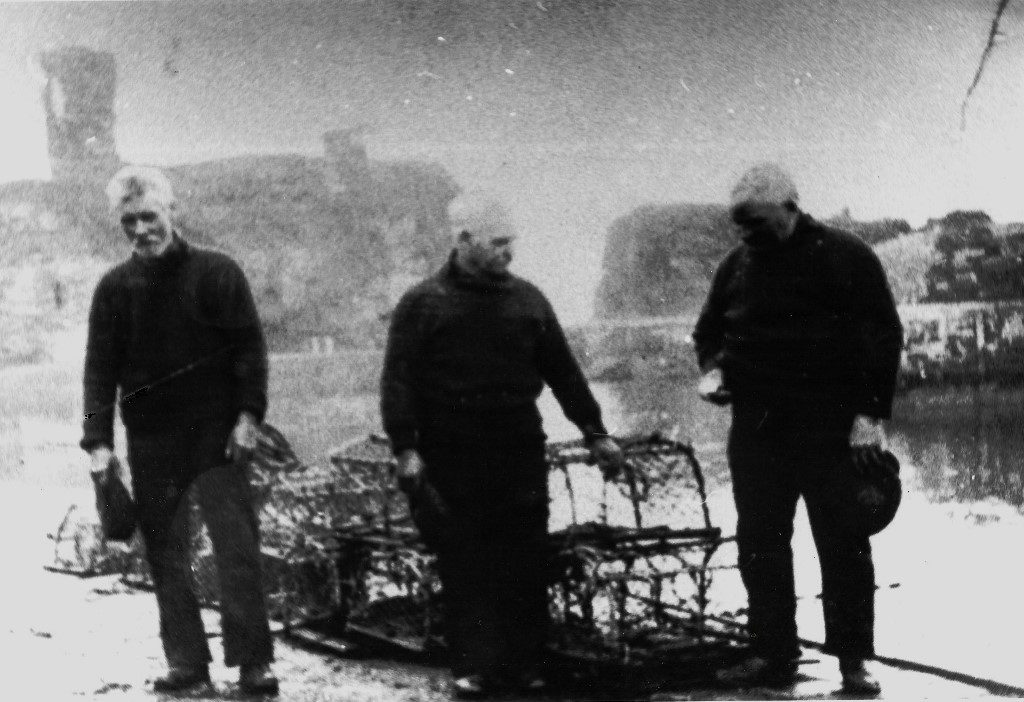This month, we are going back to Dunbar harbour in the early 20th century. We do not have exact dates for these photos although there is an approximate date for the 4th one. These photos are from a file in the History Society room in Dunbar Town House and hard copy versions can be seen if you pay a visit.

In the first photo, you can see a huge haul of fish (probably herring) which has been dumped near the north wall of the harbour. The fish were gutted and put into barrels before being taken off to be sold. On the left, there are numerous barrels which may have been filled or are ready to be filled. Most of the picture is taken up by the women who spent long hours, in poor conditions, gutting the fish. The women and girls involved in this were often referred to as “fisher lassies” which might now be seen as a rather romantic (or patronising) name for the female workers. There is a solitary man in the photo, who may be about to take a basket of fish to the barrel section. You can read more about the process of the layering of the fish into barrels here. The photo is from the early 20th century – maybe 1910s or 1920s.

The second photo shows a row of women working as fish gutters outside Craig Villa on the south side of the harbour, with the castle in the background. The men appear to be watching (or supervising) the women. As the right hand side of the photo has faded, the girl appears wraith-like. Behind the girl are rows of fish barrels, perhaps ready to be collected. Of the two men who appear centrally, the one on the left was Tommy Thomson, whose nickname was traiveller. The workers would be employed by Thomas Craig, a fish merchant in the town who also had a cooperage at the harbour. This was very hard, monotonous and smelly work, without any of the benefits of modern health and safety. Again, this photo may be early 20th century.

In this rather poignant photo, a family can be seen at the harbour sorting or “reddin’ oot” fishing lines and you can see that there are still some fish attached to the lines in the basket in front of the man. You can read more about line fishing and the baskets used by fisher families here. The bait on fishing lines had to be done by hand and it was a very laborious task, again done by women. It’s not clear what the woman is doing with the bowl on her knee – sorting out bait perhaps? The family have obviously posed for the camera but the fisherman has not re-adjusted his hat! The young girl on the right has a determined look on her face. The family look poor as most fishing families at this time – early 20th century – were.

The final photo is even more poignant than the previous one. The date is uncertain but it may be November 11 1919. The three men have all taken their hats off and the man on the right is checking his timepiece. They are remembering the dead of World War 1 and checking for 11am on 11 November – Armistice Day. The Dunbar war memorials were not built until the early 1920s. The three men in the photo are, from left to right – Mr Gallagher Johnstone (Johnson?), Mr ? Main and Mr ? Robertson. It is likely that these men knew of family members or friends who were killed in the war.
You must be logged in to post a comment.